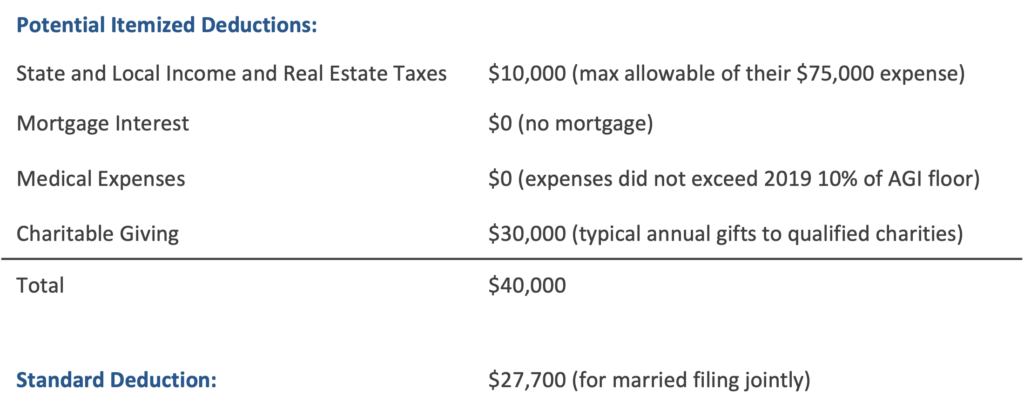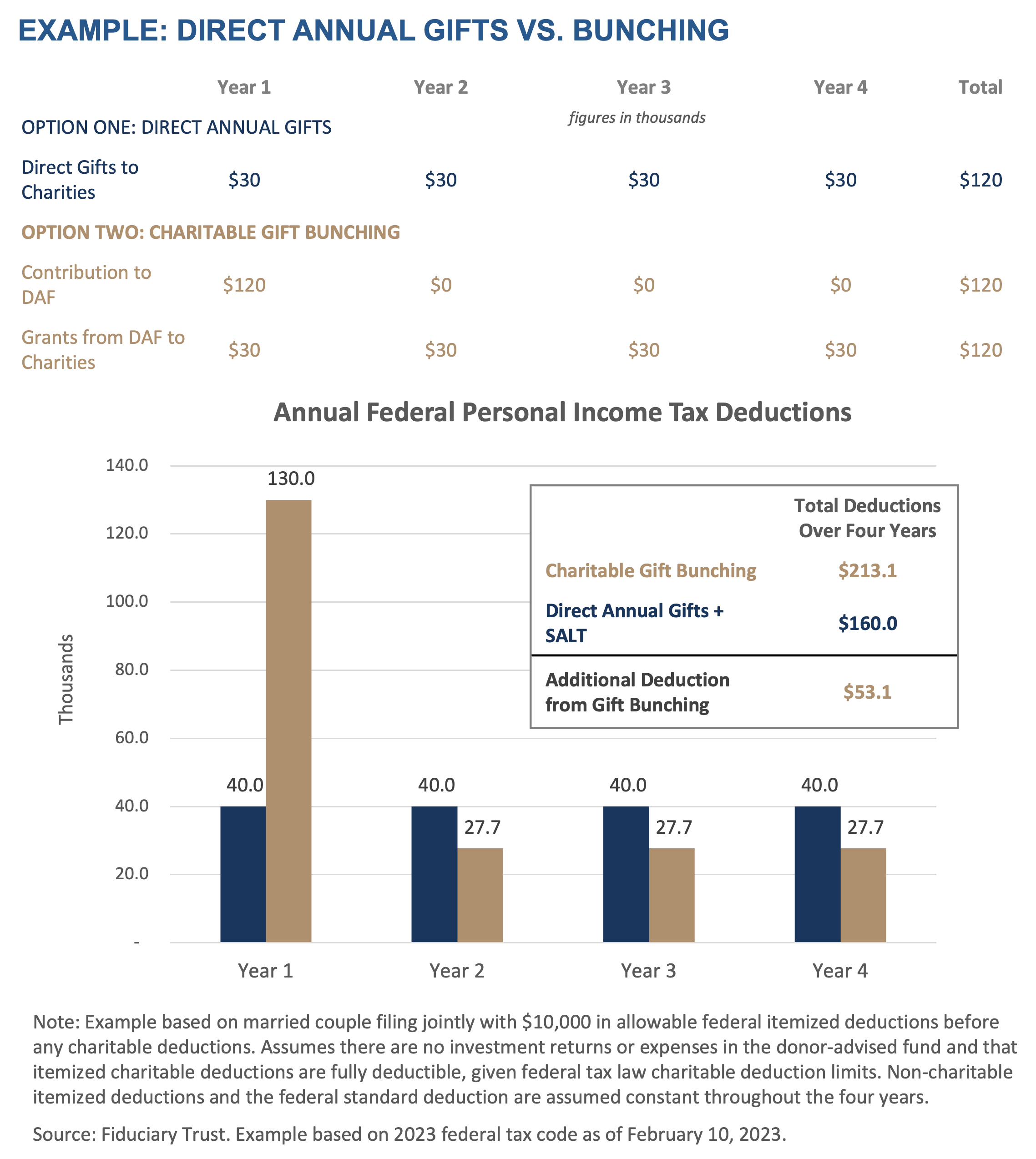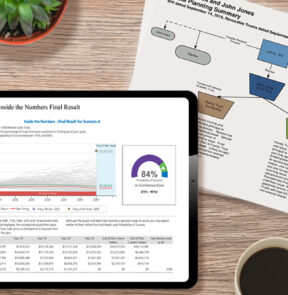The federal tax law enacted at the end of 2017 may allow for an increased use of charitable gift “bunching” in order to accomplish philanthropic goals. The $10,000 cap on deductions of state and local income and real estate taxes could bring the standard deduction into play for high-net-worth households who might never have considered it before. The bunching technique may benefit donors whose non-charitable itemized deductions fall below the new higher standard deduction ($27,700 for persons married filing jointly in 2023), so long as the donor has sufficient taxable income to fully deduct several years of charitable contributions in a single year, given deduction limits.
Bunching involves consolidating tax-deductible charitable contributions that would normally be made over multiple years into a single tax year. In the consolidated year, the donor contributes to a charitable giving vehicle, such as a donor-advised fund (DAF), and receives an immediate tax deduction through itemizing deductions on his or her federal tax return. The donor would then recommend grants from the donor-advised fund to qualified charities over several years, allowing the donor to utilize the now higher standard deduction in those years.
For more information on donor-advised funds, read or view the piece “Using Donor-Advised Funds to Achieve Charitable Goals”
The following hypothetical example involving Bill and Susan Smith illustrates the charitable gift bunching technique:

Using a typical direct annual charitable gift approach, the Smiths would lower their federal tax bill by itemizing their deductions ($40,000) rather than electing the $27,700 standard deduction. Assuming their deductions did not change, over a four-year period the Smiths would benefit from a cumulative $160,000 in federal tax deductions (four years at $40,000 per year).
Using the charitable gift bunching approach, in the first year, the Smiths would fund a DAF with a sponsoring nonprofit with $120,000 in appreciated securities: an amount equaling four years of their planned charitable giving. Since their federal adjusted gross income (AGI) is greater than $400,000, they can fully deduct the DAF contribution, as it is less than 30% of their AGI. (The deduction limit is 60% of AGI for cash charitable contributions, and unused deductions may generally be carried forward for up to five future years.) Combining the charitable contribution with their $10,000 of deductible state income and real estate taxes, the Smiths could take a $130,000 itemized deduction in year one for federal tax purposes. Although the Smiths could donate cash to the DAF in this bunching approach, donating appreciated securities held for more than one year would result in their not incurring capital gains tax on such appreciation.
Since their only potential itemized deduction in years two through four would be the $10,000 in state and local income and real estate taxes, the Smiths would then elect to take the higher $27,700 standard deduction in each of the three years. Across the four years covered by their bunched donation, the Smiths would receive $213,100 in federal tax deductions ($130,000 in year one, plus $27,700 per year in years two through four). During each of those four years, the Smiths would annually recommend that $30,000 in grants be made from the DAF to the IRS-qualified charities they select. This approach is illustrated below:

In this example, the charitable gift bunching approach would generate a total of $213,100 of tax deductions over the four years, compared to the $160,000 generated without bunching. The additional $53,100 in tax deductions would likely result in lower taxes, assuming that the Smiths’ AGI and federal tax rates remained constant throughout the four-year period.
Learn about Fiduciary Trust’s donor-advised funds program.
Before implementing a charitable gift bunching approach, however, it is important to examine several factors specific to your financial situation, the charitable giving vehicles used, and your charitable objectives. You should consult your tax and wealth advisors to see if charitable gift bunching is the best practice for you, and if appropriate, to determine how best to implement this technique.
Article updated February 10, 2023



